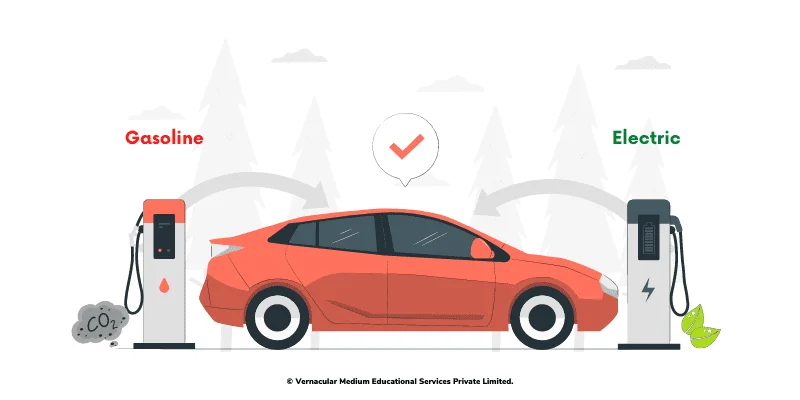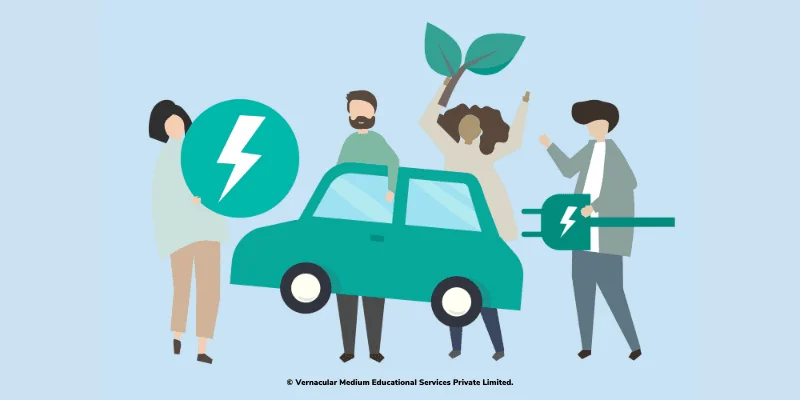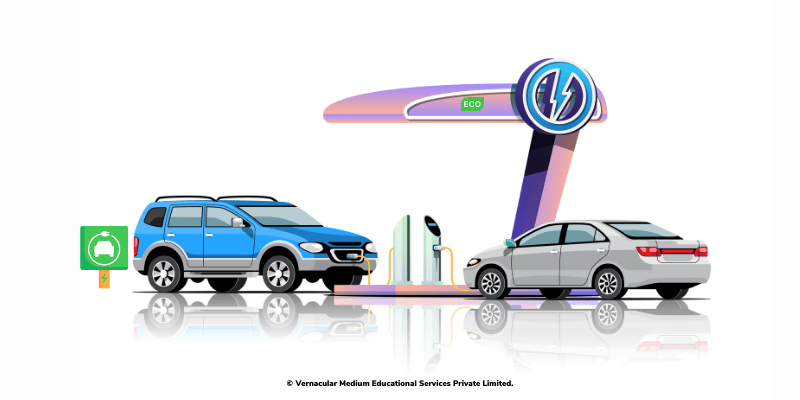Many people have misconceptions about E-Vehicles and the future of transportation. The fact is that electric vehicles can be a lot cleaner than regular gas-powered cars. For example, in Europe, two out of three new cars sold were electric or hybrid in 2017. In Norway, where taxes on dirty cars are high, electric vehicles make up half the market, and the country plans to be entirely fossil fuel free by 2025.
Electric Vehicles Or E-Vehicle Don’t Need Gasoline Or Diesel To Operate:
An e-vehicle is powered by an energy source such as electricity from renewable sources like solar panels or wind turbines. There are several types of e-vehicles. One is a hybrid, like the Toyota Prius, which usually uses the gas engine to charge up the batteries. Others are pure electric such as the Tesla Model 3 and Nissan Leaf. Hybrid and pure electric vehicles do not emit air pollutants or greenhouse gases from burning petroleum fuels. Even in these early days of e-vehicle production, there is enough supply to cause dealer shortages in many locations. The fuel efficiency is high enough that a short trip even by an SUV can often work out better than a traditional car or truck.
Some Companies Intend To Produce High-Speed Rail Lines Between Major Cities:
This superfast train process would be similar to Japan’s HSR (High-Speed Rail) system. If so, we will have the option to drive our cars on board and run on a battery or plug in to charge the batteries. Manufacturers have been improving batteries and range so quickly that these concerns seem like they might already be a thing of the past. For example, GM’s Bolt has an EPA range of 238 miles from its 60 kWh battery pack. In addition, Tesla also has an estimated 200-mile range from its $35k Model 3. These numbers are easily better than anything offered for under $20k today. And some are already selling cars with 200 miles of range or more.
Tesla’s Base Price Includes The Federal Tax Incentive Currently Being Offered:
In California, the tax incentive is $2,500 over three years, and in New York, it could be as much as $4,000 over two years. Tesla’s Model X, with a $78k starting price, also has a range of 400 miles (lost when you charge it yourself) which is significantly better than anything else available today. And Porsche and Mercedes-Benz will soon offer 2-seater electric sports cars with 400+ mile ranges starting around $70k.
E-Vehicles Are Much More Efficient Than Gas-Powered Vehicles:

This means acceptable performance using a fraction of the energy required by conventional vehicles. For example, a hybrid vehicle like the Toyota Prius uses just half the energy of a regular vehicle but is considered twice as efficient. Like with any new technology, e-vehicles will become cheaper over time and make up an increasingly large share of the current market share as they become more popular. In addition, as with all new technologies, there will be new competitors entering the market to try to grab their piece of the pie. As a result, expect some fantastic deals on less expensive used e-vehicles in the years ahead.
E-Vehicles Will Eventually Become The Only Vehicles On The Road:
Many predict that the next generation of cars will be hybrid or electric. Still, over the coming decades, many e-vehicles will be bought and used until all vehicles are powered by electricity. By that time, everyone should have a reliable car that doesn’t emit carbon dioxide or other harmful pollutants. The cost for electricity to power an e-vehicle is lower than traditional fuel-powered cars. In addition, there are fewer problems with maintenance costs due to regenerative braking and regenerative storage systems.
E-vehicle batteries can also store electricity from renewable sources, making them a significant part of the future power grid. A 10-kWh battery, for example, could store enough energy to provide electricity for a single home for almost two days. Power companies can store excess electricity in batteries during the day at off-peak times when demand is low and use this stored energy when demand and prices are high in the evening.
There will also be a push for solar-powered charging stations, which could generate enough power to power vehicles of all kinds during the day. There is now an incentive to charge your car at night when excess solar power is available in some areas. Meanwhile, improvements in range and charging times are only just beginning. Nissan recently announced that its newest Leaf would get more than 200 miles per charge and recharge in 30 minutes. And Tesla claims that it can offer over 400 miles on a single charge, with charging times of just 15 minutes.
Car companies are also working on ways to increase the range of e-vehicles through new methods, including airless tires and improved regenerative braking systems. In addition, there is recent talk about adding a windshield wiper and heater to the interior of an e-vehicle for improved comfort in colder weather.
Electric Vehicles Are Often Cheaper Than Gas-Powered Cars:
While an e-vehicle’s upfront costs tend to be higher than a gasoline vehicle, over time, this gap can become smaller as prices drop further. If a traditional car costs $20k, the equivalent e-vehicle will probably cost $25k. Like other new technologies, prices on e-vehicles are forecasted to fall over time. So within 10–15 years, the price of both types of vehicles could be the same or similar.
Electric Vehicles Are Mostly Better For The Environment Than Gas-Powered Cars:

E-vehicles create no local emissions and use less energy because their engines are smaller, more efficient, and lighter. In addition, the “Emissions” label on some e-vehicles will eventually be stamped with a zero. The overall greenhouse gas emissions from using an e-vehicle are about 50% lower than those of a conventional equivalent. The reason is that electricity is made mainly from burning clean natural gas or renewable sources like solar or wind power. In contrast, a typical gas vehicle must first be refined and then burned to create energy before it can power an engine, creating lots of smog and greenhouse gases in the process.
Conclusion:
Many people believe that global warming is a serious issue, and it’s one of the biggest problems facing our planet today. With electric vehicles, transportation companies and their customers can help to reduce the amount of greenhouse gas emissions in their communities. The use of e-vehicles will improve the environment for future generations. In addition, advances in battery technologies provide consumers with new capabilities by allowing them to drive longer ranges using less energy. This improves both electric range and efficiency, which is suitable for everyone.
**********
Disclaimer: Views expressed are the author’s own.




Thought Provoking
Hope you liked it.